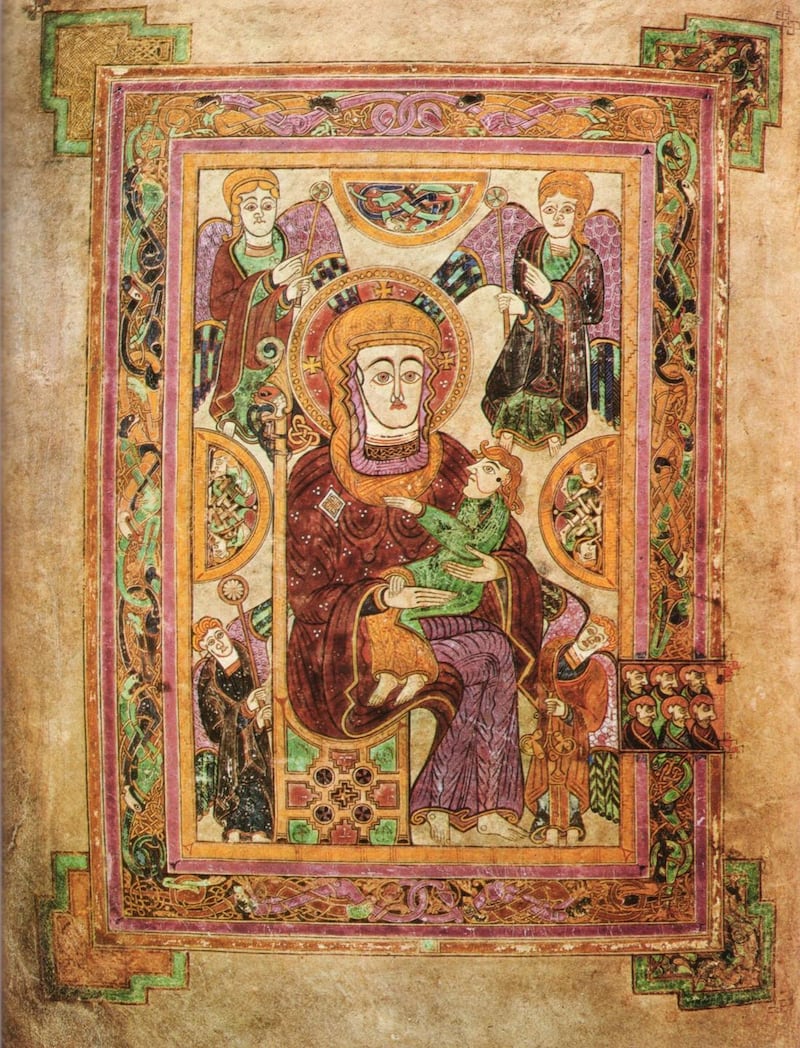Jesus preached the kingdom of God, but Luke and Matthew, the evangelists who compiled the two established Nativity legends, described the world as it is, in a child’s version of the gospel message. Their stories, if nonfactual, are also nonfiction. That’s to say our authors, a Greek and a Jew, are fabulists; but they are not confabulators.
We may not know where or when Jesus was born (some scholars say 3 or 4 BC), but Bethlehem is still an occupied garrison town on the borderline between settler and nomad, city and desert, where the politics of water have always prevailed.
The peace is not quiet; the quiet is not peaceful. Even the rival Christian priests despise each other as they hunker over holes in the ground. We are at the storm centre of the ordinary human encampment.
For me, raised by an orphan housekeeper and married to an adopted child, Mary is the patron saint of the unmarried mother and not purity's plaster cast
Into this precarious scarcity and strife a teenage mother in an outhouse gives birth to a baby, and the infant latches. There is no flash photography, angelic or otherwise, and no flash mob.
There is only the steam of the placenta rising like incense among consanguineous cattle and criminal Bedouin travellers. Something little, something liminal, squeezes its way on to wet straw, subsists, and is safeguarded.
Somehow, so, we endure.
It will take centuries for what St Augustine called the Feast of the Foetus to merge with the saturnine cult of the winter solstice in late antiquity, but the partnership still makes sense.
A Singapore stopover shows you the trash of fake Christmas trees flanking capital-punishment posters to warn drug mules, and mulled wine on a Melbourne decking seems surreal when parrots are shrieking in the scorched eucalyptus. Ask any Antipodean expat.
Up here, however, in the true north, Christmas is older even than Christianity, and will survive it as the supreme liturgy of the wall-fallen dugout that we call our civilisation.
An ecumenical marvel, the story sees Hindus praying before cribs, Muslims at Marian shrines in Syria, agnostics queuing in a subzero side street for seats at the Messiah, a barber chorus of vocational atheists on the tipsy boulevards.

It's as much about Mary. She has diversified since she squatted in a cow stall, now the Venus of Nazareth, queen of heaven, mother of God, a bridal sign of rejuvenated Zion, and an icon of the eternal feminine. She's all of these beautiful, baby-talk titles, as a loved one is all of her pet names.
For me, raised by an orphan housekeeper and married to an adopted child, she’s also the patron saint of the unmarried mother and not purity’s plaster cast.
When, in the Koran, she cries out as she labours, “I wish that I were dead and wiped from memory,” she magnifies the grace and grief of marginal women everywhere – and her marginality, be it said, is often the work of her sisters alongside their menfolk.
“Jesus, Mary and Joseph, I’m dying,” I heard a woman scream in the National Maternity Hospital, on Holles Street, 45 years ago, yet she was bringing life into the world. An elderly spinster in a hospice bed whispered to a chaplain, “My waters are breaking.” But she was dying. Truly, we are the strangest species: earthen, unearthly.
Grand houses in the parish where I live are festooned with fairy lights that are wound around window ledges, lintels and the new gargoyle of oligarchs: a CCTV camera
So the Chinese pictogram for "good" is a rudimentary brush-stroke image of a mother and child, and the oldest depiction of Mary and the newborn Jesus in the whole of western art is found in an ancient monastic manuscript that is stored in the middle of Dublin, close to the diesel fumes of the 46a bus and the buskers' amplifiers, in the sanctuary of Trinity College library.
Like poor Oedipus, who became a martyr in the Orthodox church of the Byzantine Empire as a sign of the future Good Friday scapegoat, the neonate on the painted page has two left feet.
Nothing much changes. Grand houses in the parish where I live are festooned with fairy lights that are wound around window ledges, lintels and the new gargoyle of oligarchs: a CCTV camera.
But what Cardinal Des Connell, a demonised prelate, once said, on a tour of inspection in an Irish maternity hospital, was gospel then and is gospel now: "The midwives here can tell me which of the babies will go to prison and which of the babies will send them there."
Christmas, it seems, has not yet come to pass. Instead, it has come to stay.
Aidan Mathews is an author and a producer at RTÉ











